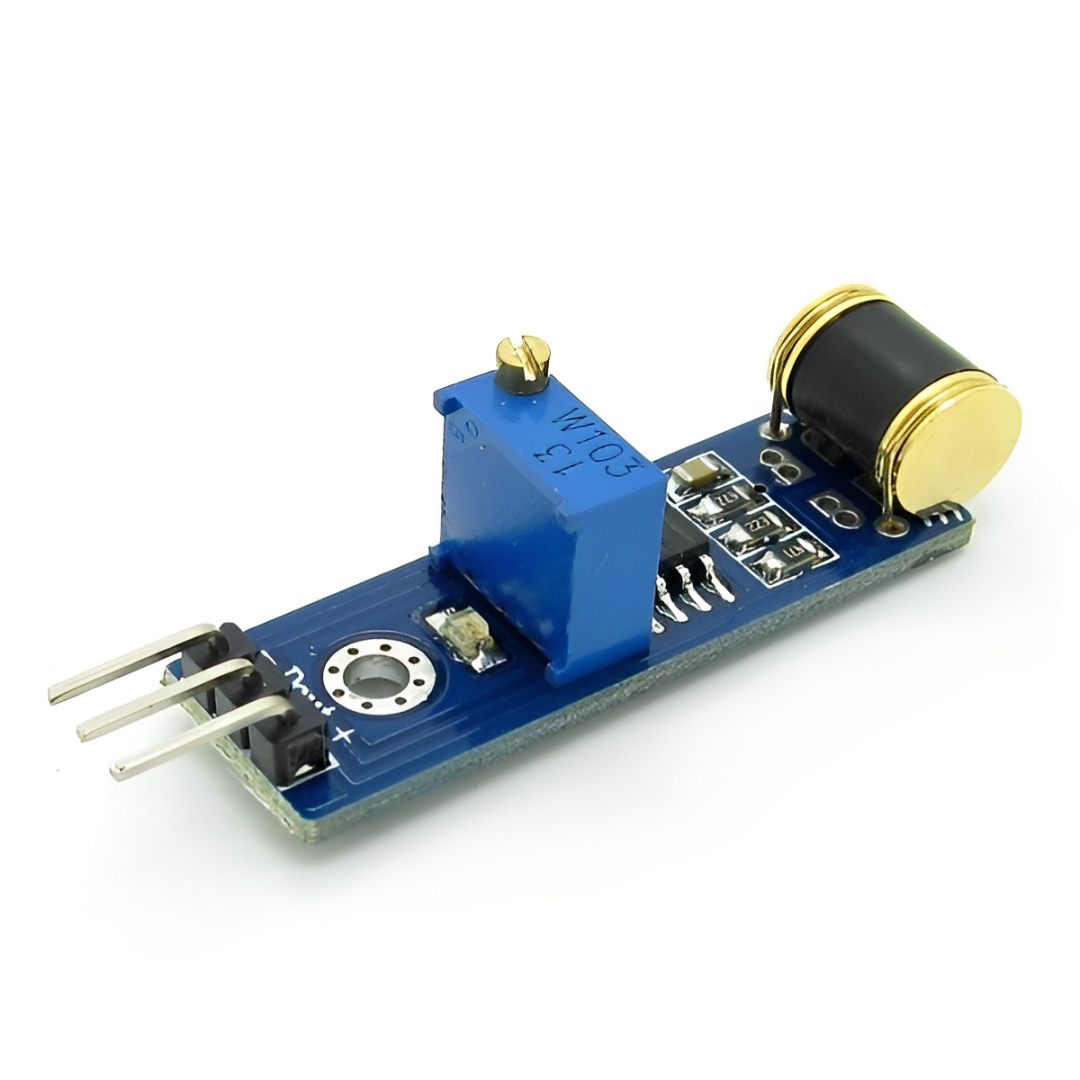What is the 801S and How Does it Work?
The 801S Vibration Shock Sensor Module is designed to detect vibrations and shocks. It utilizes a highly sensitive spring-type vibration sensor that responds to physical disturbances. When a vibration or shock occurs, the internal spring moves, triggering a change in the electrical circuit. This change is then output as a digital signal, which can be easily read by microcontrollers like Arduino or Raspberry Pi.
Essentially, it acts as a simple switch that closes when a sufficient vibration is detected. The module typically includes:
- The 801S Vibration Sensor: The core component responsible for detecting vibrations.
- A Comparator Circuit: To convert the analog signal from the sensor into a digital output.
- A Potentiometer: For adjusting the sensitivity of the sensor.
- Power and Signal Pins: For easy connection to microcontrollers.
Applications: Where Can You Use the 801S?
The versatility of the 801S makes it suitable for a wide range of applications:
- Security Systems: Create basic vibration alarms for doors, windows, or valuable objects. Detect tampering and receive instant alerts.
- Impact Detection: Monitor for impacts on machinery, vehicles, or structures. Identify potential damage or malfunctions.
- Interactive Projects: Build interactive displays, games, or art installations that respond to physical interactions.
- Sleep Monitoring: Detect movement during sleep to track sleep patterns or identify potential sleep disturbances.
- Robotics: Implement obstacle detection or collision avoidance in robotic systems.
- Sports Training: Measure the impact force during sports activities, like boxing or martial arts.
Integrating the 801S with Microcontrollers:
Connecting the 801S to an Arduino or Raspberry Pi is straightforward. The module typically has three pins: VCC (power), GND (ground), and DO (digital output).
- Connect VCC and GND: Connect the VCC pin to the 5V or 3.3V power supply and the GND pin to the ground of your microcontroller.
- Connect DO: Connect the DO pin to a digital input pin on your microcontroller.
- Write the Code: Use the microcontroller's programming environment to read the digital input from the DO pin. When a vibration is detected, the pin will go high (or low, depending on the module's configuration).
Tips for Optimizing Performance:
- Adjust Sensitivity: Use the potentiometer to fine-tune the sensor's sensitivity to match your specific application.
- Mounting: Securely mount the sensor to the surface you want to monitor. Avoid loose or unstable mounting, which can lead to false triggers.
- Filtering: Implement software filtering to reduce noise and false triggers.
- Power Supply: Ensure a stable power supply to prevent erratic behavior.
Why Choose the 801S?
- Low Cost: The 801S is an affordable sensor, making it accessible for hobbyists and professionals alike.
- Easy to Use: Its simple digital output makes it easy to integrate with various microcontrollers.
- Versatile: The wide range of applications makes it a valuable tool for numerous projects.
- Compact Size: The small form factor allows for easy integration into space-constrained designs.
Conclusion:
The 801S Vibration Shock Sensor Module is a valuable asset for anyone looking to add vibration detection capabilities to their projects. Whether you're building a security system, creating interactive art, or monitoring machinery, the 801S provides a reliable and cost-effective solution. By understanding its working principles and exploring its various applications, you can unlock its full potential and bring your innovative ideas to life.

